How to Drive in the Snow
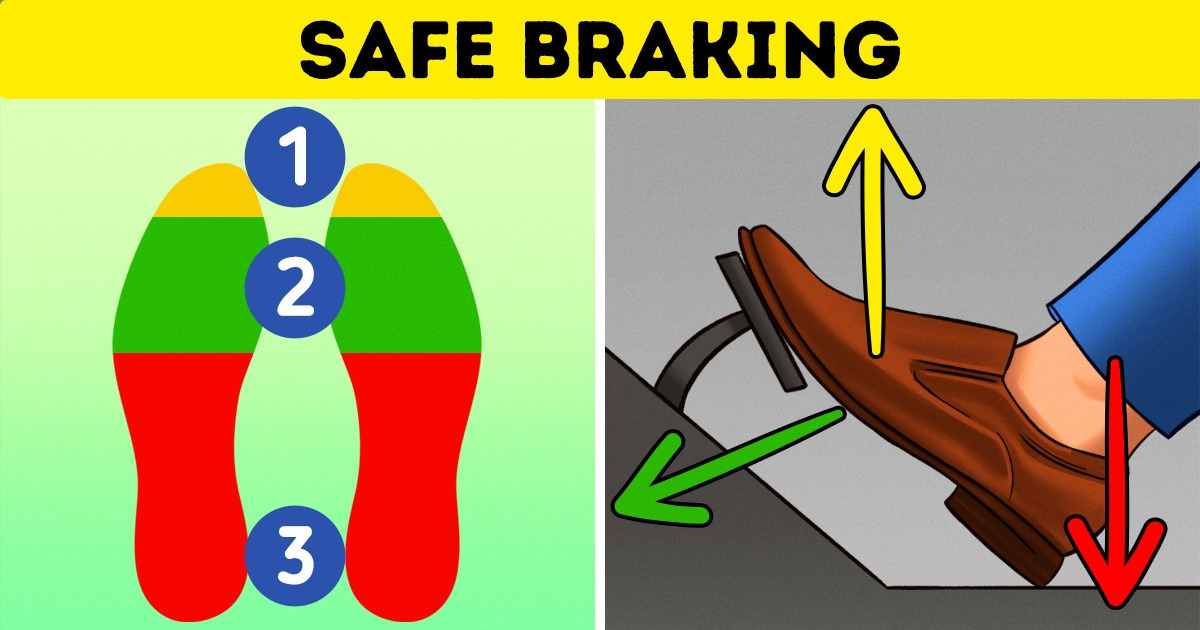
Driving in snow requires different ways of maneuvering the vehicle than on dry roads. And while snow on the road can seem daunting to many drivers, there are steps you can take to reach your destination safely. Therefore, 5-Minute Crafts prepared helpful tips on how to drive in the snow.
A. Before driving in the snow.
To reach your destination safely and without stress, it is essential to prepare before you start to drive in the snow. Below you will find the steps you need to take.
1. Plan your journey.
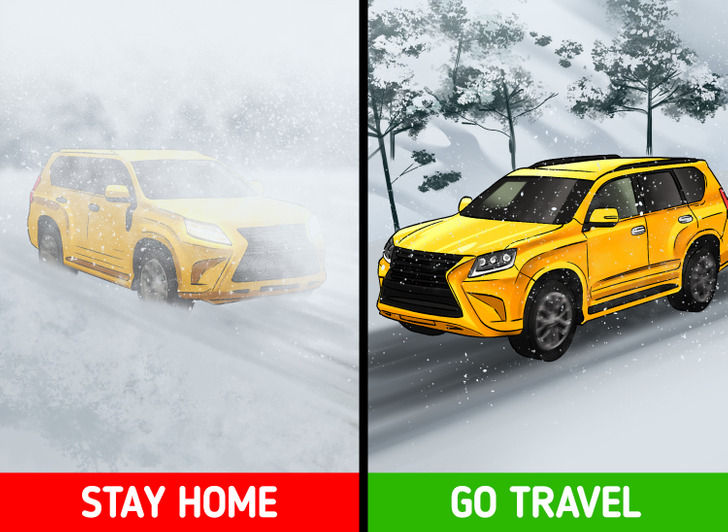
The best option is to stay home if the weather is bad, but if you have no choice, then be prepared. Follow the weather forecast, plan your route and pay attention to those areas that may be exposed to some unwanted elements. Inform others of your route, destination, and the estimated time of your arrival.
2. Clean the snow and ice off your vehicle.
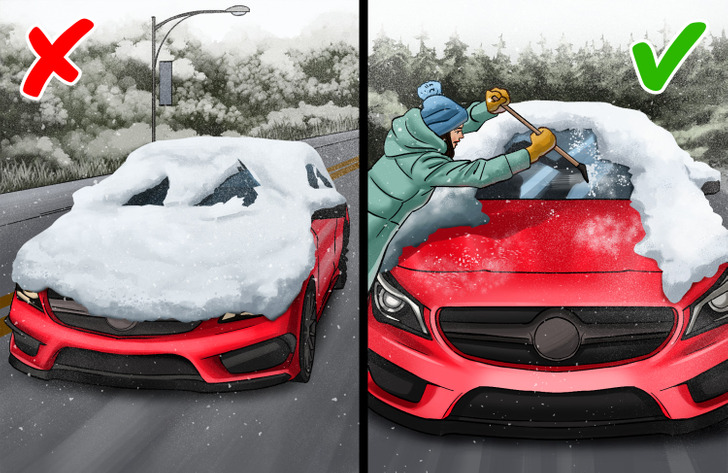
You must be able to see out of every glass panel in your vehicle. So you should clean the top of your roof, the windows, the mirrors, and the lights.
3. Check your wipers and wiper fluid.
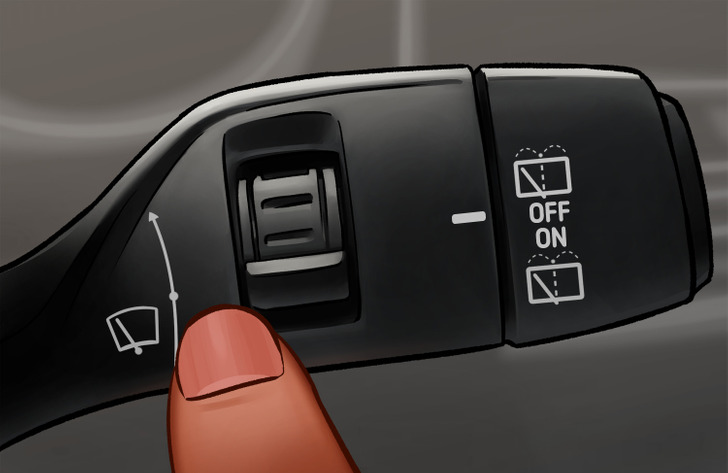
The wipers need to be in good shape so they can clean off your windshield. For this reason, check to see if the auto wiper control is switched off before starting the car, as this could blow the wiper control fuse if they are frozen to the windshield. Make sure that you have good quality wiper fluid that protects down to at least −35°C to prevent the water from freezing. That way, the wipers will be able to clean the windshield.
4. Check your tires.
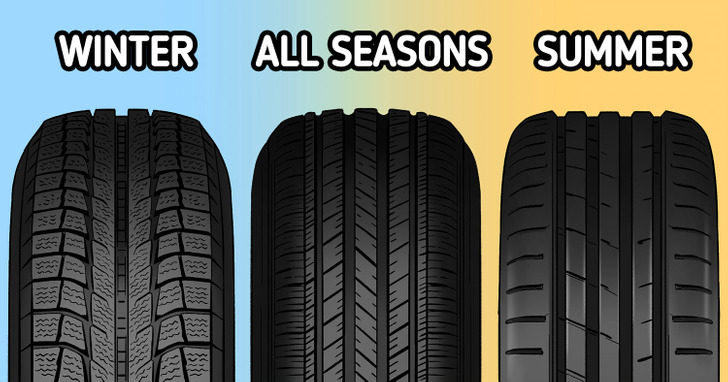
5. Be prepared.
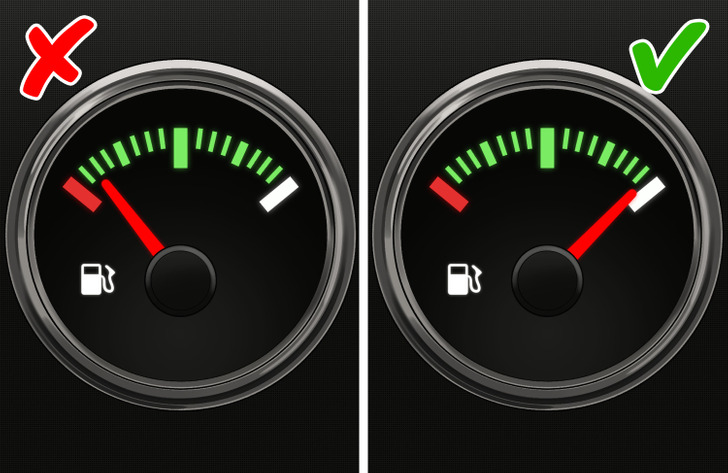
Driving in the winter, especially in snow and ice, can be unpredictable. So, it is good to be prepared for any possible situation. Keep the following in your car:
- a warning triangle, an emergency kit, and a hi-visibility vest
- a phone charger, a map, a blanket to keep you warm, and some food and water
- a de-icer, an ice scraper, spare wiper fluid, a demisting pad, a shovel, a spade and a square of carpet for putting under your drive wheels should you get stuck in the snow
- a flashlight (wind-up, so you don’t run out of battery), jump leads, recovery tracks, tire chains or tire socks
- also, in the winter, your gas tank should always be half full or full. In that way, condensation will not form in the tank.
B. Driving in the snow.
Now that you know what you need to do before you start driving in the snow, it’s time to move on to how to do that.
1. Drive slowly.
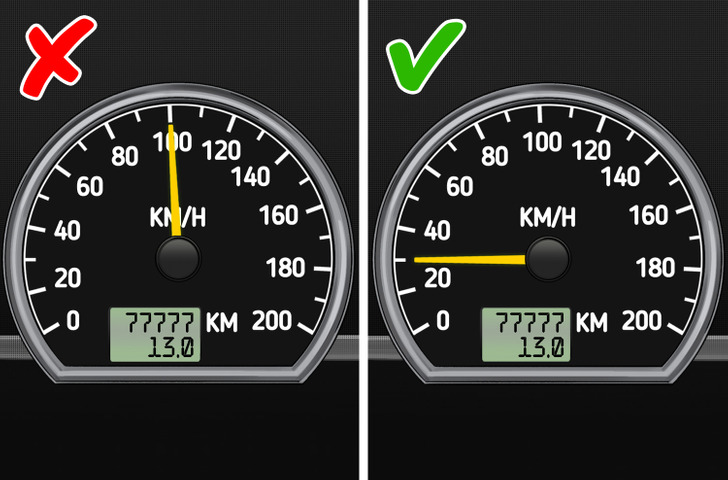
The key to safe driving in the snow is smooth and slow driving. Every movement of the vehicle should be deliberate, gentle, and gradual. When driving on snow or ice, always adjust your speed down to account for lower traction. Your speed should be adjusted to the road conditions. In winter, it’s safer to drive below the posted speed (the maximum speed under ideal conditions).
2. Accelerate and decelerate slowly.
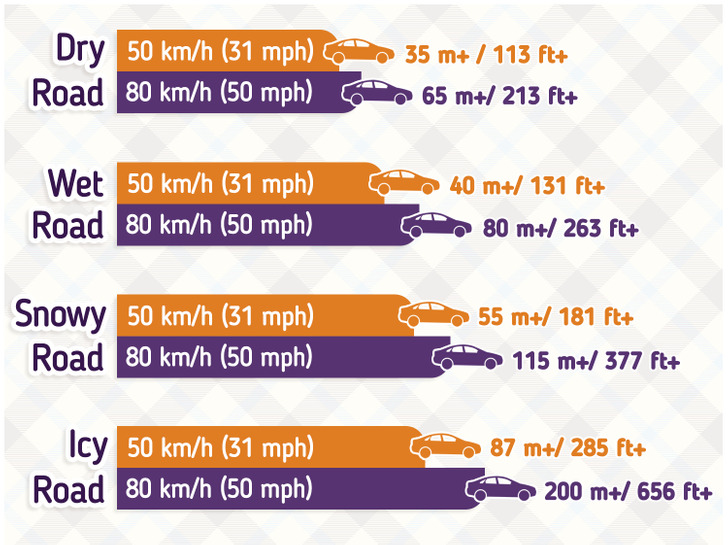
Keep in mind that it takes longer to slow down on icy roads. For example, if you drive 30 miles per hour (about 48 km/h) in snow, your stopping distance is 100 ft (about 30 m). On ice, it’s 200 ft (about 61 m). And if your speed is 60 miles per hour (about 97 km/h), the stopping distance is now multiplied by 4: in snow, it’s 400 ft (about 122 m), and on ice, it’s 800 ft (about 244 m). You can avoid skids and restore traction by slowly applying the gas.
3. Keep the following distance longer.
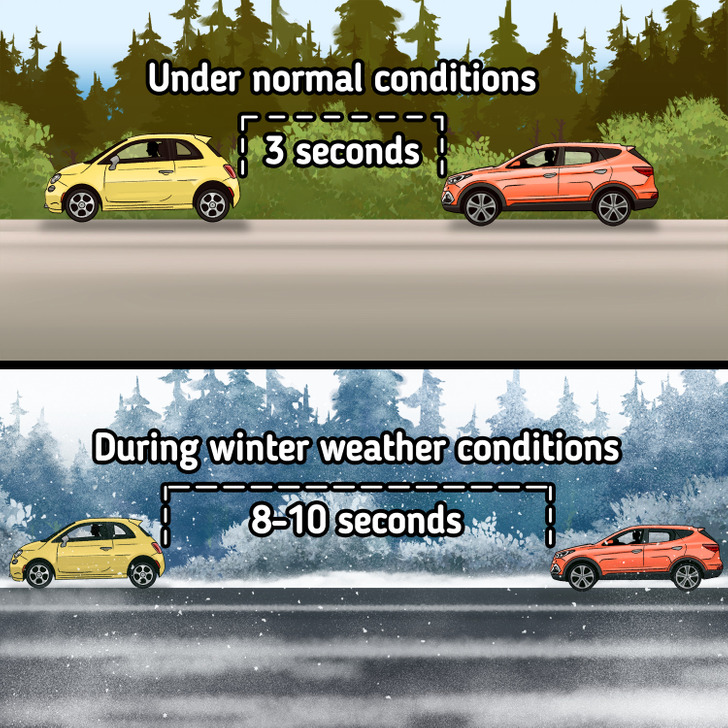
Put more space between your car and the car ahead of you. In the snow and ice, the distance should be 8 or more seconds. If anything happens up ahead, you have lots of time to react.
4. Anticipate every next move.
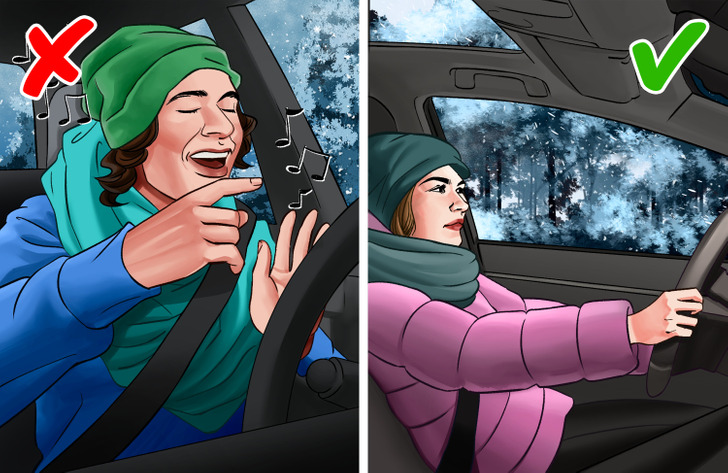
When driving in the snow, you need to think about each following motion you will make with your vehicle. The worse the weather is, the more you should be concentrated on careful driving so that you and other traffic participants can be safe. Slow down for turns, and keep triple the stopping distance from the car in front of you.
5. Know your brakes.
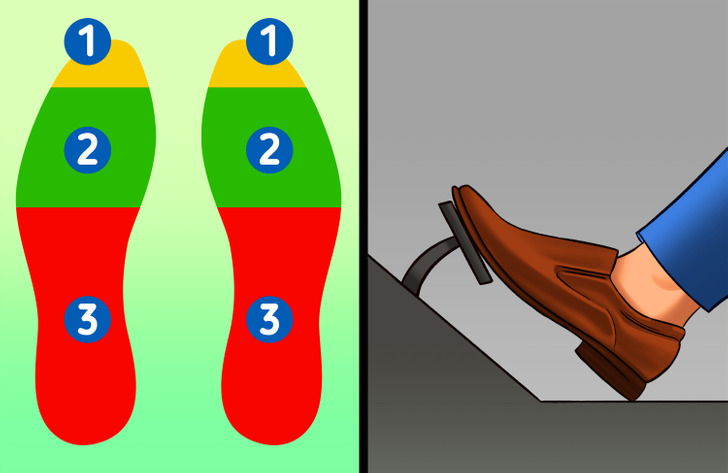
Many people are unaware of this, but the way you place your foot can have an impact on how hard you brake. That’s why even if you have antilock brakes, instead of using your toes (1) you should use the ball (2) of your foot to apply firm, steady pressure on the brake pedal while keeping the heel of your foot (3) on the floor.
6. Avoid cruise control.
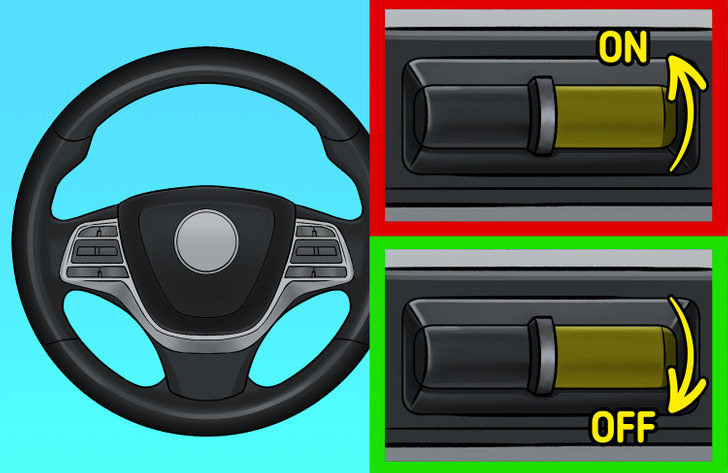
Using cruise control operation on low-traction surfaces, like ice and snow, can result in a skid or spin. And can affect the system’s ability to maintain a constant vehicle speed. Therefore avoid using cruise control on slippery roads.
7. Don’t stop if you can avoid it.
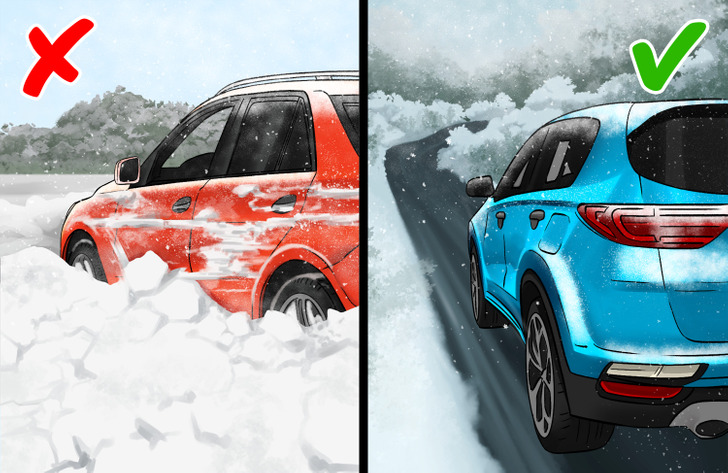
8. Deal with the skids.
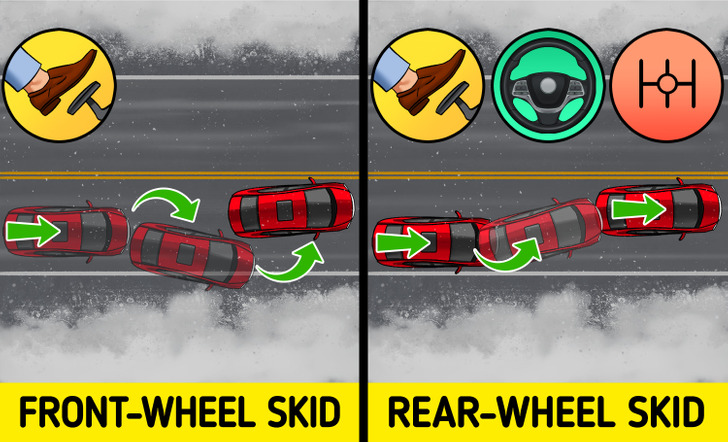
If you happen to run into a slick spot and your car starts to slide away from the direction in which you wanted it to go, don’t panic and don’t slam on the brakes! Skidding can be handled, and you can get your car back under complete control in no time.
Do the following:
- For a front-wheel skid: In the case where the front tires lose grip, and the car turns in a wider arc than you expect, reduce the gas. In a few moments, the front tires should regain their traction. As your traction returns, point your vehicle toward where you want to go.
- For a rear-wheel skid: In the case where the rear tires lose traction, quickly turn the steering wheel in the same direction that the rear is sliding. Reduce the throttle and do not brake. When the rear wheels regain traction, steer back in the original direction.
9. Don’t power up on hills.
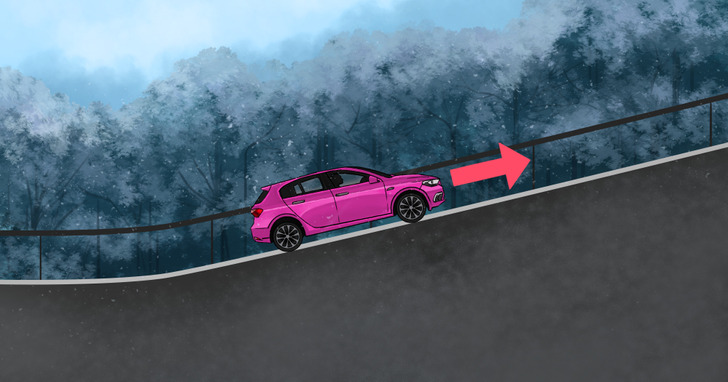
Don’t apply extra gas on snow-covered roads because that will make your wheels spin. Before you reach a hill, try to gain some inertia, which will take you to the hilltop. Once you’re there, reduce your speed and slowly go downhill.